24 Hours Hotline: +8613735411378
Email:chengdu@tripstoshanghai.com
24 Hours Hotline: +8613735411378
Email:chengdu@tripstoshanghai.com
Seasonal Highlights: When to Visit Zhangjiajie for the Best Experience
Zhangjiajie’s landscape transforms dramatically with each season, offering unique spectacles—from misty "floating mountains" in spring to ice-clad pillars in winter. Here’s a detailed breakdown to help you plan your trip perfectly.
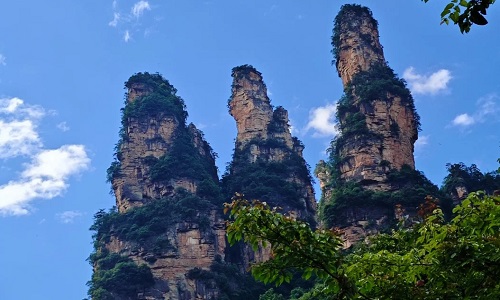
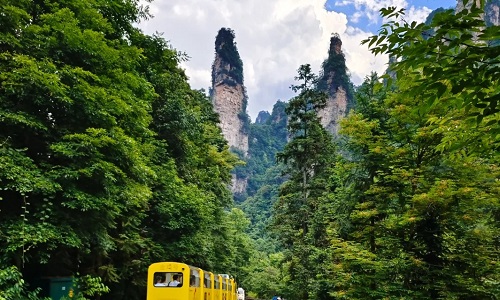
Spring (March-May): The Season of Mist & Blooms
Sea of Clouds Peak Season (April: 70% Chance)
Best Spots: Yuanjiajie (Avatar Mountains), Tianzi Mountain
When to Shoot: 5:30-7:00 AM, when fog swirls around the peaks like Chinese ink paintings.
Pro Tip: Stay overnight in Wulingyuan to reach viewpoints before day-trippers arrive.
Rhododendron Blooms (Late April-Early May)
Where: Tianzi Mountain’s "Imperial Garden" area
Unique Feature: Wild red/pink rhododendrons blanket the cliffs (over 10,000 acres).
Photography Note: Use a telephoto lens (70-200mm) to compress the layers of flowers and peaks.
Rainy Season Alert (Late May)
Risks: Sudden downpours flood trails; Bailong Elevator may close.
Workaround: Pack quick-dry gear + check @ZhangjiajiePark on Weibo for real-time updates.
Summer (June-August): Cool Retreats & Raging Waters
Natural Air Conditioning (Mountain Top: 22°C vs City: 35°C)
Best Escape Routes:
Golden Whip Stream: Shaded canyon walk
Yellow Stone Village: Breezy summit views
Avoid: Midday hikes—opt for early mornings (6-9 AM) or late afternoons (4-7 PM).
Waterfall Spectacle (June-July)
Golden Whip Stream’s flow triples, creating dozens of new cascades.
Prime Photo Spot: "Sky Waterfall" near Yuanjiajie (only visible after heavy rain).
Photography Challenges
Harsh Light: Use polarizing filters to cut glare.
Crowds: Shoot vertical panoramas to exclude tourists.
Autumn (September-November): Golden Foliage & Misty Magic
Red Leaf Forecast (Peak: Oct 25-Nov 15)
Top Locations:
Yangjiajie: Maple forests turn crimson.
Tianmen Mountain: Cliffside vines glow golden.
Leaf Tracker: Check Zhangjiajie’s official app for real-time color updates.
Misty Mornings (September: 58% Fog Rate)
Dreamy Conditions: Low-hanging fog creates "floating island" effects.
Pro Move: Stay at Yuanjiajie’s in-park hotels for pre-dawn access.
Post-National Day Discounts (After Oct 7)
Hotels drop rates by 40%; crowds thin by 60%.
Hidden Perk: Guides offer private tours at group prices.
Winter (December-February): Ice Kingdoms & Cultural Festivals
Rime Ice Phenomenon (Below -5°C + 90% Humidity)
Where to See: Tianmen Mountain’s West Line
Survival Kit:
Spiked shoe covers (sold at gates for ¥20)
Hand warmers (glass walkways freeze!)
Chinese New Year Special (Jan/Feb)
Tujia Traditions:
"Hand-Waving Dance" bonfires
Sticky rice cakes steamed in bamboo
Catch It: Zhangjiajie Grand Theater’s nightly shows.
Reduced Transport (50% Fewer Buses)
Strategic Planning:
Base near tram/skyrail hubs (e.g., Tianzi Mountain Cable Car).
Hire a private driver (¥400/day) for flexibility.
Seasonal Cheat Sheet
Season Pros Cons Packing Essentials
Spring Epic clouds, flowers Rain disrupts plans Waterproof jacket, anti-slip shoes
Summer Lush greenery, waterfall Crowds, harsh light Cooling neck gaiter, wide-brim hat
Autumn Foliage, thin crowds Chilly mornings Layered clothing, gloves
Winter Ice scenery, festivals Limited transport Thermal underwear, traction shoes
Pro Tip: Hybrid Itinerary
Visit in late November to catch:
Last autumn colors at lower elevations
Early winter rime ice at summits
Did You Know? Full moon nights make the peaks glow silver—ask hotels about "midnight viewing tours" (offered sporadically).
Monthly Micro-Guide: When to Catch Zhangjiajie's Magic Moments
Zhangjiajie’s landscape transforms dramatically each month, offering unique seasonal spectacles. Here’s a detailed monthly breakdown of the most extraordinary phenomena—and how to experience them like a pro.
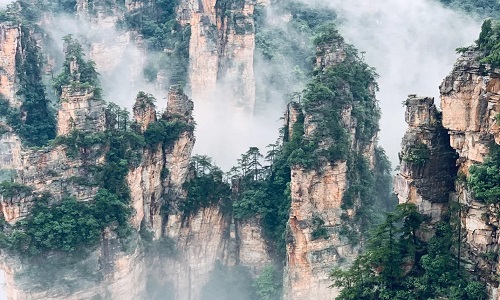
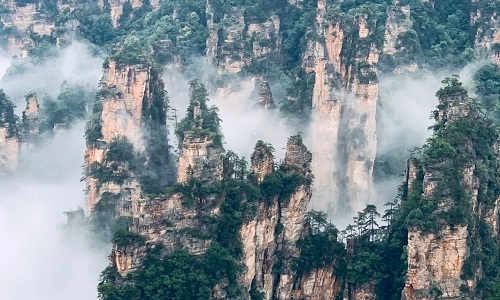
April: "Heaven’s Door Mist" at Tianmen Mountain
Phenomenon: The iconic Tianmen Cave (Heaven’s Gate) frequently gets engulfed in rolling mist, creating an ethereal "dragon breathing" effect.
Best Time:
Early April to mid-May (peak humidity season)
Daily window: 7:30–9:30 AM after overnight rain
Photography Tips:
Use a telephoto lens (70-200mm) to compress the mist layers
Shoot from the front plaza (28.122°N, 110.486°E) for the classic framing
For video: Timelapse the mist dispersing (~20 mins)
Heads Up:
The 999-step staircase becomes slippery—wear grip shoes
Morning cable car lines are longest—arrive by 6:30 AM
July: Firefly Valley Night Adventure
Experience: A hidden bioluminescent wonderland where thousands of fireflies light up the forests near Golden Whip Stream.
Logistics:
Open: July 1–August 20 (weather-permitting)
Entry: Limited to 200 visitors/night (book 15+ days ahead via Zhangjiajie National Park WeChat)
Guided tours only (Mandarin; 7 PM & 8:30 PM slots)
Pro Tips:
Camera gear: Fast lens (f/2.8 or wider), tripod mandatory
Bug repellent hack: Wear long sleeves + citronella oil (DEET harms fireflies)
Secret spot: Ask guides to stop at "Glowworm Bend" (extra 10 mins walk)
Did You Know? These fireflies (Luciola praeusta) only thrive in ultra-clean air—proof of Zhangjiajie’s pristine ecosystem.
October: International Photography Festival Perks
Event: The annual Zhangjiajie Photography Week (Oct 15–22) unlocks normally restricted areas.
Exclusive Access:
VIP sunrise slots at Avatar Hallelujah Mountain (normally overcrowded)
Abandoned observation decks reopened (e.g., "Eagle’s Beak" at 28.359°N, 110.417°E)
Local models in Tujia costumes available for portraits
Gear Rentals On-Site:
Free loan of ND filters + polarizers (ID deposit)
Drone permits issued within 1 hour (vs. usual 3-day wait)
Pro Move: Submit entries to the "Peaks in Mist" contest—winners get 2025 festival VIP passes.
January: Snow & Ice on the Glass Bridge
Transformation: The Zhangjiajie Grand Canyon Glass Bridge becomes a sparkling ice world, with frozen railings and snow-dusted cliffs.
Must-Knows:
Opening: Dec 20–Feb 10 (closed if ice >3 cm thick)
Safety gear: Spiked overshoes (¥50 rental) + heated gloves (sold onsite)
Best light: 2–3 PM when sun melts ice crystals for glitter effects
Instagram Gold:
Pose lying down for "floating over clouds" illusions
Slow-mo videos of snowflakes hitting glass
Avoid: Mid-morning (10 AM–12 PM)—tour groups dominate.
Pro Planning Tips
April/October: Pack moisture-wicking clothes—humidity hits 90%
July: Book firefly tours immediately after rainy days—peak activity
January: Monitor @ZhangjiajieSnow on Weibo for real-time bridge conditions
Weather Decision Matrix: When to Visit for Your Specific Needs
Planning a trip to Zhangjiajie requires strategic timing—the right season can mean the difference between postcard-perfect views and foggy disappointments. Below is a detailed breakdown of the best times to visit based on different travel priorities, along with key risks to consider.
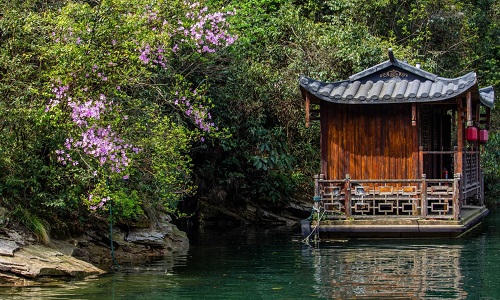
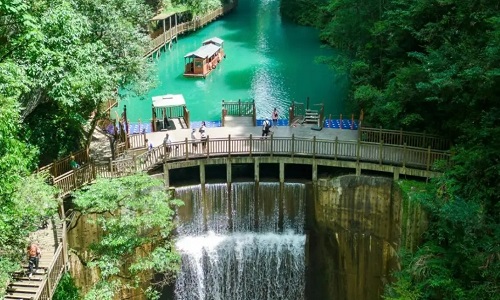
For Photography Enthusiasts
Best Time: September 15-30
Why?
Golden autumn light enhances the sandstone pillars.
Morning mist lingers longer (70% chance of dreamy fog).
Fewer crowds compared to October holidays.
Risks & Challenges:
Sunrise competition: Top spots (e.g., Avatar Mountain) fill up by 4 AM.
Unpredictable fog: Some days may be too hazy for clear shots.
Limited golden hour: Days shorten quickly in late September.
Pro Tip:
Use live weather cams (like Zhangjiajie Official Site) to track real-time conditions.
For Family Summer Trips
Best Time: July 1-20
Why?
Cool mountain air (avg. 22°C/72°F vs. city’s 35°C/95°F).
Full waterflow at waterfalls (e.g., Golden Whip Stream).
Kids-friendly activities: Glass bridge, monkey feeding.
Risks & Challenges:
Peak domestic travel: July 21-August 20 = China’s summer holiday chaos.
Sudden thunderstorms: Afternoon hikes may get canceled.
Higher prices: Hotels spike 30% after July 10.
Pro Tip:
Book early-entry tickets for popular spots (e.g., Grand Canyon Glass Bridge).
For Budget Travelers
Best Time: Late November
Why?
Hotel discounts: 5-star rooms drop to ¥400/night (vs. ¥1,200 in October).
No crowds: Enjoy private views at major landmarks.
Unique scenery: Early frost patterns on the peaks.
Risks & Challenges:
Closed trails: Yellow Stone Village and others may shut for maintenance.
Chilly temps: 0-10°C (32-50°F), requiring thermal gear.
Short daylight: Attractions close 1-2 hours earlier.
Pro Tip:
Pack heat packs—no indoor heating in most park areas.
For Off-the-Grid Explorers
Best Time: May (Rainy Season)
Why?
Emerald-green landscapes: Lush foliage after spring rains.
Secret waterfalls: Hidden cascades only flow in May-June.
Zero tourist crowds: Most Chinese avoid "wet season."
Risks & Challenges:
Slippery trails: Hiking boots + trekking poles mandatory.
Frequent fogouts: Some viewpoints may be invisible for days.
Limited transport: Park shuttles run half-schedule.
Pro Tip:
Hire a local Tujia guide (¥200/day) to find safe wild paths.
Alternative Plans for Bad Weather
If your ideal season doesn’t work out:
Too rainy - Switch to cave exploring (Yellow Dragon Cave).
Too crowded - Visit lesser-known Tianmen Mountain.
Too cold - Focus on indoor cultural shows (Tujia dancing).
Final Advice
Zhangjiajie’s beauty changes dramatically by season. Use this matrix to:
Match your travel style with the right weather window
Avoid costly mistakes (like visiting during typhoon season)
Discover hidden perks (e.g., winter’s ¥50 hotpot buffets)
Celestial Spectacles: Zhangjiajie’s Rare Natural Phenomena Timetable
For photographers and nature lovers, Zhangjiajie’s ever-changing skies create once-in-a-lifetime visual miracles. Here’s when and where to witness these ephemeral wonders, with precise technical guidance.
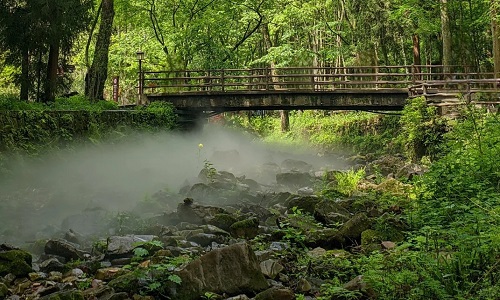
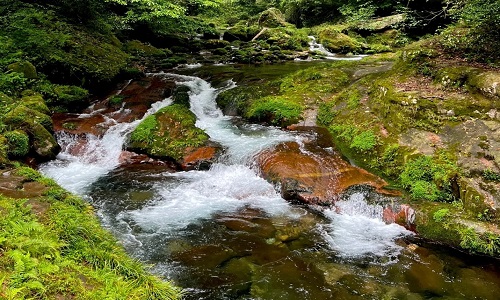
Sunrise Magic
Best Viewing Times
Summer (June-August): 5:30 AM - 6:15 AM
Peak moment: When the first rays hit Avatar Hallelujah Mountain (6:03 AM in July)
Winter (December-February): 6:50 AM - 7:20 AM
Golden tip: The sun rises directly through Tianmen Cave on winter solstice (Dec 21-22)
Prime Locations
1.Emperor’s Throne (Tianzi Mountain)
Uninterrupted 180° panorama
Pro setup: Use a 24-70mm lens with graduated ND filter
2.Grand Canyon Glass Bridge
Sun illuminates the canyon floor vertically
Caution: Tripods prohibited—use monopods
Buddha’s Halo (Glory) Phenomenon
When It Appears
9:00 AM - 11:00 AM after rain clears
Optimal Conditions:
85-95% humidity
Temperature inversion layer
Your shadow must cast onto clouds below
Where to Capture It
Mihun Terrace (Yuanjiajie)
Circular halo forms around your shadow
Technical note: Shoot at f/8-f/11 for sharp diffraction rings
Heavenly Gate Platform
Halo appears framed within the mountain arch
Local belief: Seeing it brings 10 years of good luck
Star Trails Over the Stone Forest
Moonless Nights Schedule
Follow the lunar calendar:
25th to 5th day of each lunar month
Peak darkness: 10:30 PM - 3:30 AM (astronomical twilight)
Essential Gear
Camera: Full-frame with bulb mode
Lens: 14-24mm f/2.8 (or wider)
Settings:
ISO 1600-3200
30-second exposures stacked
Intervalometer set to 1-second gaps
Secret Spots
1.Old House Field (Laowuchang)
Unpolluted skies (Bortle Scale Class 3)
Foreground: Silhouetted peaks
2.Yellow Stone Village
Star trails curve around "Five Finger Peak"
Insider tip: Rangers allow overnight stays for astro-photographers
Real-Time Monitoring Tools
Cloud Forecast: Windy.com’s "Fog" layer (3-hour predictions)
Light Pollution Map: LightPollutionMap.info
Local Rangers’ WeChat Groups (ask your hotel to connect you)
Pro Warning
These phenomena require meticulous planning:
Arrive 90 minutes early for sunrise setups
For Buddha’s Light, wear dark clothing to enhance your shadow
Star shoots demand thermal gear—mountain temps drop to -5°C (23°F)
Did You Know? The "Stairway to Heaven" effect (sunbeams through mist) occurs only 17 days/year—mostly in April and September
Festival Calendar: Must-Experience Cultural Events
Zhangjiajie’s stunning landscapes transform during traditional festivals, offering unique cultural encounters you won’t find any other time of year. Here’s when to visit for authentic local celebrations:
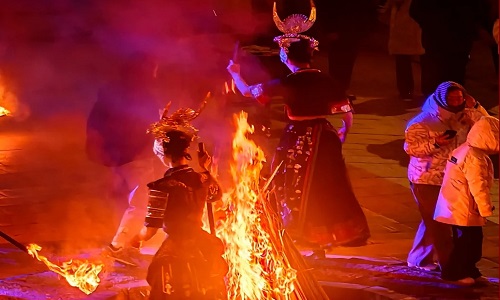
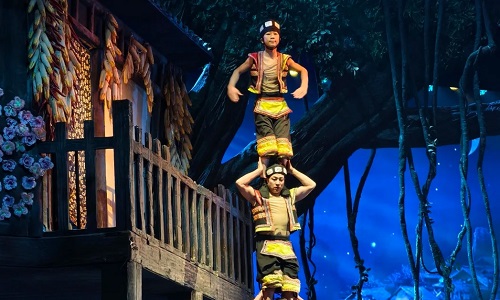
1. San Yue San Festival (March 3rd, Lunar Calendar)
What Happens:
Tujia "Daughter’s Day" – A matchmaking tradition where unmarried Tujia girls sing folk songs to potential suitors.
Handicraft Markets – Buy hand-woven textiles and silver jewelry directly from artisans.
Bamboo Stilt Dancing – Locals perform in colorful costumes on 3-meter-high stilts.
2025 Dates: April 1-3 (Lunar March 3rd)
Best Place to See It: Tianzi Mountain Village (near the "Imperial Brush" peaks)
Pro Tip: Arrive early—the singing competitions start at dawn!
2. Dragon Boat Week (June)
What Happens:
"Cliff Herb Gatherers" Show – Watch daredevil performers reenact ancient Tujia medicine-collecting techniques on vertical cliffs (with safety ropes, of course!).
Herbal Market – Sample wild mountain tea and medicinal soups used for centuries.
Zongzi Making – Learn to wrap pyramid-shaped sticky rice dumplings with local families.
2025 Dates: May 31 - June 6
Best Place to See It: Zhangjiajie Grand Canyon (near the glass bridge)
Safety Note: The cliff show is weather-dependent—check with your hotel.
3. Mid-Autumn Moonlight Concert (September)
What Happens:
Open-Air Symphony – A live orchestra plays under the stars, framed by illuminated sandstone pillars.
Lantern Floating – Send handmade paper lanterns down the Suoxi River.
Mooncake Masterclass – Make Tujia-style mooncakes with rose petals and walnuts.
2025 Dates: September 17 (Full Moon)
Best Place to Experience It: Yangjiajie Scenic Area (reserved seating for hotel guests)
Photography Hack: Use a telephoto lens to capture the moon rising between peaks.
Why These Festivals Matter
These events let you experience Zhangjiajie beyond the postcard views:
Living Culture: See traditions passed down for 500+ years.
Exclusive Access: Some areas only open to the public during festivals.
Magical Atmosphere: Imagine folk songs echoing through misty peaks at sunrise!
Planning Tip: Book hotels 6+ months early for festival dates—they fill fast!
Essential Gear Guide: Professional Equipment for Zhangjiajie
Zhangjiajie’s dramatic landscapes demand specialized photography gear—especially when dealing with unpredictable weather, extreme temperatures, and strict drone regulations. Here’s what you must pack to capture the magic.
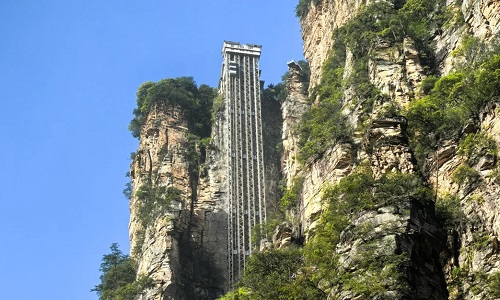
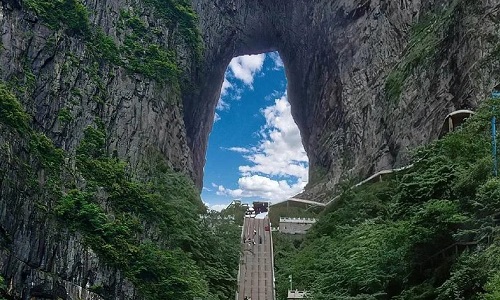
Rainy Season Essentials (May–June, September)
Must-Have Gear
Camera Rain Cover – Heavy downpours can strike suddenly. Opt for a full-body sleeve (like OP/TECH USA) over disposable plastic bags.
Microfiber Lens Cloths (3+ packs) – Humidity causes constant lens fogging. Peak Design’s absorbent cloths dry 50% faster.
Silica Gel Packs – Toss them in your bag to prevent mold in gear.
Critical Mistake:
Using a UV filter as rain protection—water droplets still distort shots.
Pro Technique:
Shoot through rain for ethereal mist effects (set shutter speed to 1/125s to freeze droplets).
Winter Survival Gear (December–February)
Battery & Operation Hacks
Battery Heater Pouch – At -10°C, DSLR batteries die in 20 minutes. Vello’s USB-powered warmer extends life by 300%.
Hand Warmers – Tape them to your tripod legs to prevent metal freeze burns.
Glove Strategy:
Inner layer: Thin touchscreen-compatible gloves (e.g., The Heat Company)
Outer layer: Arctic-grade mittens with quick-release straps
Insider Tip:
Carry 2x more batteries than usual—cold drains them 3x faster.
Drone Flying Rules & Tips (All Seasons)
Legal Flight Windows
9:00–11:00 AM | 2:00–4:00 PM
No-fly zones: Tianmen Mountain, Glass Bridge, and near cable cars
Permit required: Submit forms 72 hrs early
Optimal Drone Choices
Model Advantage Zhangjiajie Suitability
DJI Mini 3 Pro Under 249g (no permit) Limited in high winds
Mavic 3 Cine 5.1K Hasselblad camera Best for foggy conditions
Autel Evo II 8K & thermal imaging Illegal without special permit
Packing Checklist by Season
All-Year Essentials
Polarizing filter (cuts haze on peaks)
Peak Design Capture Clip (for hiking with heavy gear)
Portable carbon fiber tripod (under 1kg)
Season-Specific Adds
Summer Winter
• Cooling towel • Toe warmers
• ND1000 filter • Lens heater tape
Final Advice
Zhangjiajie rewards the prepared. As pro photographer Li Wei says: "The difference between a postcard shot and a failed memory card often comes down to a ¥50 rain cover."
Crowd Avoidance Strategies: When & How to Escape the Masses
Zhangjiajie's surreal landscapes attract over 50 million annual visitors, but smart travelers can still find solitude. Here’s your tactical guide to beating the crowds.
Daily Crowd Patterns
The park follows a predictable daily rhythm:
Peak Hours (10:00-14:00)
Tour buses arrive en masse
90-minute waits at Bailong Elevator
Yuanjiajie viewpoint 3-deep with selfie sticks
Smart Workarounds:
Sunrise Strategy: Enter at 6:30 AM (1.5h before crowds)
Reverse Route: Start at Tianzi Mountain while others head to Avatar Mountain
Lunchtime Advantage: Attractions thin out 12:30-13:30 as groups eat
Pro Data:
Wednesdays are 17% less crowded than weekends (park entry stats)
Annual Golden Windows
Two secret periods when crowds vanish:
Post-Spring Festival
Dates: Usually mid/late February
Why it's magic:
Chinese New Year travelers have left
Hotel prices drop 40%
Frosty peaks with zero tourist queues
School Restart Week
Dates: Early September
Hidden perks:
Summer vacation families are gone
Mosquitoes decrease by 70%
First autumn mists appear
Caution: Some mountain cafes may close during these lulls
Nighttime Adventures
The park's best-kept secret: limited night access to Yangjiajie.
What to Expect:
Guided groups only (max 20 people/night)
Headlamps provided to spot:
Glowworms in summer
Starry skies unpolluted by daytime haze
Nocturnal wildlife (flying squirrels, owls)
How to Book:
1.Apply through official park WeChat 3 days prior
2.Need: ID copy + health code
3.Cost: ¥380 (includes special insurance)
Pro Tip: Full moon nights reveal silhouetted peak forests
Crowd-Beater Toolkit
Live Monitoring: Check "Zhangjiajie Crowd Radar" mini-program
Guide Hack: Hire retired park rangers who know hidden trails
Tech Advantage: Use heat map overlays on Amap/Google Maps
Local Wisdom: Insider Tips from Zhangjiajie Natives
To truly master Zhangjiajie’s ever-changing landscapes, you need more than guidebooks—you need centuries-old local knowledge. Here are the most valuable secrets passed down by Tujia elders, mountain guardians, and pro photographers.
Tujia Weather Proverbs: Predicting Magic Moments
This ancient Tujia farming saying reveals when nature will put on its best show:
Qingming Festival (April 4-6) marks the peak of spring mist.
If fog clings to mid-level peaks at dawn, expect:
Epic cloud seas by 9 AM
Sunbeams piercing pillars at noon
Science behind it: Warm-cold air clashes create stable fog layers.
Photographer’s Note: Set up at Yuanjiajie’s "First Bridge" by 5:30 AM when this proverb holds true.
Mountain Keepers’ Safety Warnings
"Avoid Cliffs for 3 Days After Heavy Rain"
Veteran trail guards enforce this life-saving rule because:
Loose Rocks: Water seeps into sandstone cracks, causing delayed collapses.
Slippery Roots: Moss grows rapidly on damp trails (67% of falls occur post-rain).
False Stability: Some paths look dry but have undermined foundations.
How Locals Check Safety:
Tap cliffs with poles—hollow sounds mean danger.
Watch macaques—they avoid unstable areas first.
Photography Crew Code Words
"Cloud Meal" = Breakfast Delivered to Your Sunrise Spot
When photographers whisper this at hotels, it means:
3 AM kitchen prep of thermos-packed tea eggs + baozi.
Guides will carry your gear to secret vantage points.
Fee: ¥50-80 (cheaper than missing the shot!).
Pro’s "Cloud Meal" Kit Includes:
Hand warmers (for numb fingers)
Mini tripod (to eat while shooting)
Red flashlight (avoids ruining night vision)
Why This Wisdom Matters
These aren’t just tips—they’re cultural heritage. As Tujia guide Long A-Yong says: "The mountains talk to those who listen."
Want More Secrets?
Ask hotel staff about "moonbow nights" (rare waterfall rainbows after summer storms).
Barter with cable-car operators for "golden hour ride loops".
Climate Change Impacts: How Shifting Weather is Reshaping Zhangjiajie's Landscapes
Zhangjiajie’s otherworldly beauty is not immune to climate change. Recent studies and local observations reveal dramatic shifts in seasonal patterns, altering the way travelers experience this natural wonder.
Emerging Trends: Nature’s Changing Calendar
1. Delayed Golden Ginkgo Season
Historical Norm: Ginkgo trees in Tianzi Mountain’s Imperial Brush Forest typically turned golden yellow between October 25-November 5.
Current Shift: Over the past 5 years, peak foliage has delayed by 11 days, now occurring November 5-16 on average.
Scientific Cause:
Rising autumn temperatures (+1.2°C since 2018) slow chlorophyll breakdown.
Reduced nighttime cooling delays leaf pigment changes.
Impact on Travelers:
Earlier November trips now miss peak colors.
Photographers must adjust shooting schedules.
Adaptation Tip:
Monitor real-time foliage reports from the Wulingyuan Scenic Area Office.
Focus on higher elevations where leaves change sooner.
Vanishing Wonders: Disappearing Winter Magic
2. Receding Ice Formations
Traditional Scene: Frozen waterfalls and glittering ice sheaths once adorned Yangjiajie’s cliffs from December to February.
Alarming Decline:
8% annual reduction in ice coverage since 2015.
Some classic ice viewing spots (e.g., "Jade Pillar Glacier") now only freeze 1-2 weeks per winter.
Key Factors:
Warmer winters (average +2.4°C since 2000).
Fewer consecutive sub-zero days needed for ice accumulation.
Photographer’s Dilemma:
Iconic "ice-wrapped peaks" shots now require perfect timing.
Drones reveal shrinking ice patches compared to 2010 archives.
Last Chance to See:
Best Remaining Spot: Laowuchang’s north-facing cliffs (holds ice longest).
When to Go: January 10-25 (statistical coldest window).
Broader Ecosystem Shifts
Mist Reduction: Annual fog days down 15%, affecting Avatar Mountain’s dreamy ambiance.
Earlier Blooms: Wild azaleas now flower 2 weeks sooner, disrupting pollination cycles.
Intensified Rains: May-June downpours increased 23%, raising landslide risks on trails.
Climate Data Comparison
Phenomenon 2010-2015 Average 2018-2023 Average Change
Ginkgo Peak Oct 28-Nov 7 Nov 5-16 +11 days
Ice Cover Days 42 days/year 29 days/year -31%
Annual Fog Days 197 days 168 days -15%
Sustainable Tourism Tips
Visit Responsibly: Stick to marked trails to protect fragile ecosystems.
Carbon Offset: Some hotels (e.g., Pullman Zhangjiajie) offer tree-planting programs for guests.
Support Research: Donate to Wulingyuan Climate Studies Center at park entrances.
Future Outlook
By 2030, scientists predict:
Ginkgo season may shift another 5-7 days later.
Winter ice could become a rare event, seen only 1-2 years per decade.
"Misty peak" days may drop below 150 annually, altering the park’s iconic look.
Explore Your Way Holiday’s Best Recommended Tours.
We design private and Tailor-made Zhangjiajie Tours customized to your style of travel at affordable local prices. We will provide a private & spacious car and a local professional tour guide with over 5 years guiding experience only work for you or your group. Transport, ticket, and dining (We find the most authentic dishes popular with locals) all we will arrange for you according your requirements. Please check our most popular tours below:
Are the above sample tour programs not suitable for you? Dont worry, our Zhangjiajie Tour Can Be Tailor-made based on your requirements and budget to create unique Beijing experiences that allow you to interact with the local people and culture. We are Beijing travel experts who know what your guidebook and foreign agencies don't. Our enthusiastic tour expert will promptly reply you in details within 24 hours.
Prev: How to Plan a Zhangjiajie Tour from Beijing, Shanghai, or Guilin
Next: The Best Ways to Get from Changsha to Zhangjiajie By Train, Bus, or Flight
Wechat: Chinaprivatetour
24 Hours Hotline:
+8613735411378
1 to 1 tailor-made service from our professional travel advisors for the most sophisticated
Constantly excellent reviews for attraction, hotel and service Competitive price
Local experts provide quality tours Best selected knowledgeable local guides Authentic local restaurants
7*24 hours available to create you a worry-free tour. No Hidden Fees and absolutely no pressure to buy. Secured







